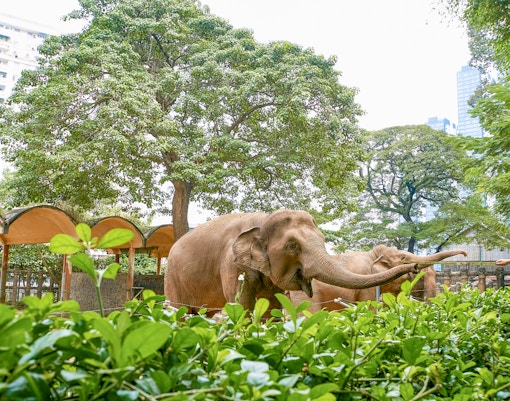The history behind the Cu Chi Tunnels — A journey into Vietnam’s underground world of war & survival
What are the Cu Chi Tunnels?

The Củ Chi Tunnels are an extensive network of underground passages spanning over 250 kilometers. Originally built in the 1940s during the Indochina War, the Viet Cong expanded them during the 1960s to include living quarters, kitchens, storage spaces, and hospitals, providing them with a hidden, self-sustaining base to operate from while evading U.S. and South Vietnamese forces.
Today, the Củ Chi Tunnels stand as a symbol of the resilience and ingenuity of the Viet Cong during the war. Visitors can explore sections of the tunnel network, learn about its construction, and see firsthand how it was used to support guerrilla warfare tactics.
Quick facts about Cu Chi Tunnels

- Official name: Củ Chi Tunnels (Địa đạo Củ Chi)
- Location: Củ Chi District, Ho Chi Minh City, Vietnam
- Area covered: Over 250 km of tunnels
- Depth: 10 meters underground
- Built in: Late 1940s during the Indochina War
- Expanded: 1960s during the Vietnam War
- Tunnel levels: 3
- Main sites open to tourists: Ben Dinh & Ben Duoc
- Purpose: Military base for the Viet Cong
What’s inside the Cu Chi Tunnels







Cu Chi Wildlife Rescue Station
This station is located 8km away from the tunnels and lets you see rescued animals such as gibbons and bears and learn about Vietnam’s conservation efforts.

Tay Ninh Holy See
Situated 40km from the tunnel, this temple features a grand hall, with dragon-wrapped pillars and a sacred Divine Eye symbol above the altar. making it one of the focal points for followers of this unique religious movement.

Saigon River Cruise
Take this scenic boat ride along the Saigon River and enjoy the lush landscapes and charming rural villages of southern Vietnam. Situated just 40 kms from the tunnels, it's a relaxing way to learn about local life.

War History Museum
Situated in Ho Chi Minh City and just 40 km from Củ Chi Tunnels, this museum features a wide collection of U.S. tanks, helicopters, jets, and bombs from the Vietnam War. Keep an eye out for the replica of the infamous “tiger cages” used to imprison political prisoners during the war.

Suoi Tien Theme Park
A cultural theme park situated 45 km from the tunnels that features roller coaster rides like the "Kamikaze", exhibits inspired by mythology such as the Palaces of Heaven and Hell, and Crocodile Kingdom where you can feed crocodiles.

Ba Den Mountain
Located about 45 km from the Cu Chi Tunnels, this southern Vietnam peak offers panoramic views and a scenic cable car ride. Along the way, you can explore ancient pagodas and experience the beauty of nature.

Ho Chi Minh City Zoo & Botanical Gardens
Located in District 1, this is one of the oldest zoos in the world. Just 50km from the tunnels, this zoo houses over 100 species of animals including rare Vietnamese animals like the Saola and Asian elephants.

Vinh Trang Pagoda
Situated in the Mekong Delta city of My Tho and 75km away from Cu Chi Tunnels, this pagoda’s massive reclining and standing Buddha statues and peaceful bonsai garden make it one of southern Vietnam’s most photographed religious landmarks.
Frequently asked questions about Cu Chi Tunnels
The Cu Chi Tunnels are an extensive underground network stretching over 250 kilometers, which played a crucial role in the Viet Cong's guerrilla warfare tactics and served as living quarters, supply routes, and strategic hideouts. Today, they stand as a testament to resilience and ingenuity.
Half-day tours typically last around 5-6 hours, including travel time. Full-day tours can extend up to 11 hours, especially when combined with other attractions like the Mekong Delta.
While it's possible to visit independently, joining a guided tour enhances the experience by providing historical context and logistical convenience, including transportation and entrance arrangements.
The Cu Chi Tunnels are open year-round, but the dry season (December to April) is the best time as you’ll avoid the heavy rains and high humidity of the wet season, making it easier to walk around and explore both the surface exhibits and the tunnels themselves. To make the most of your visit, opt for the morning tours to avoid the midday heat and large tour groups that tend to arrive later.
The tunnels are not wheelchair accessible due to narrow and uneven terrain. However, the surrounding areas and visitor centers are more accessible.
Visitors can choose to crawl through sections ranging from 20 to 100 meters. It’s completely optional and designed with exits in between for ease.
A visit to the Cu Chi Tunnels includes fascinating wartime artifacts, booby trap demonstrations, a chance to try tea and cassava (a staple wartime food), and even a shooting range where you can fire authentic weapons used during the war.
The Ben Dinh entrance is more tourist-friendly with reconstructed sections and wider tunnels. On the other hand, the Ben Duoc entrance is more authentic with original, narrower tunnels and fewer crowds.
There are displays of war relics, short documentaries, and detailed diagrams showing the full scale of the tunnel network and the underground rooms.
Yes, you’ll find small souvenir stalls selling war-themed memorabilia, local crafts, and traditional Vietnamese snacks.
